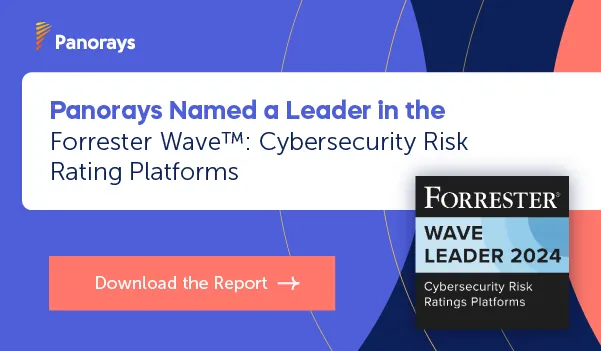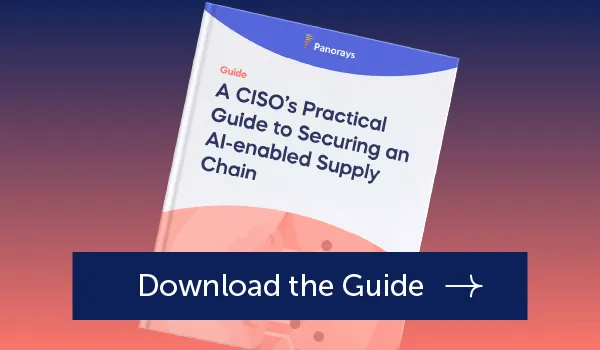A third-party security risk assessment template could be useful in helping your organization plan for and coordinate efforts to reduce cyber risk. But what is a third-party security risk assessment template, exactly? What makes a third-party security risk assessment template effective? And how can you design one from scratch?
What Is a Cyber Risk Assessment?
Let’s start with the basics. A cyber risk assessment is a formalized exploration of the risk an organization faces. In other words, how vulnerable is this organization to external threats? What are the possibilities that your digital information could be stolen, modified or destroyed? And what are the potential consequences?
What Is Third-Party Security?
For the purpose of this article, we’re going to look specifically at third-party security. So how is third-party security different from general cybersecurity?
In short, it addresses new vulnerabilities that arise from working with third parties, such as vendors, suppliers and other partners. Your organization may have a top-notch cybersecurity strategy in place, but if even one of your partners has a significant weakness, a hacker could easily exploit it and gain access to your systems anyway.
Third-party security prevents this outcome by forcing you to evaluate, scrutinize, and protect against potential vulnerabilities from your partners.
The Goals of a Third-Party Security Risk Assessment Template
Using a third-party security risk assessment template allows you to evaluate each of your potential third-party partners before incorporating them into your organization.
The goal of such a template is to help you:
- Identify and describe threats
First, this template should help you figure out what the biggest threats are — and give you space to describe them in detail. - Assess possible consequences
Some threats are nearly inconsequential, while others could pose an existential risk to your organization. This template is your chance to assess the possible consequences. - Quantify each risk
Ultimately, your goal is to quantify each risk in some way. On a scale of 1–10, how big of a threat is this? - Provide recommendations for the security team
Most threats can be addressed with better habits, new protective measures or something similar. How do you recommend solving the problem? - Streamline the process
Templates are especially valuable because they streamline the process. You can use the same template for each third-party partner, over and over. - Provide opportunities for ongoing improvement
Good templates also serve as a blueprint for potential improvement. - Serve as documentation
Your completed template will serve as formal documentation of your evaluation and can be consulted in the future.
Sections to Include in Your Third-Party Security Risk Assessment Template
Including the following sections in your template will help increase the effectiveness of your third-party partner exploration:
Nature of the relationship
Describe the nature of this relationship. Who is this third party? How are they going to support or help your organization? How often will you be communicating? How will your technologies intermingle? How much or how little access will they have?
Key technologies involved
What are the key technologies being utilized in this relationship? Is there a specific third-party software platform that you plan to incorporate into your business? Does this partner use multiple technologies that are relevant to this partnership? Are these technologies structurally sound and compliant with the latest cybersecurity standards?
User accessibility
Which users will have accessibility to data and specific technology? Will information and access be restricted? If so, how?
Roles and responsibilities
Who will be responsible for managing this partnership? Who on your team will be in charge of periodically reviewing this technology or this line of communication for potential flaws? Does this third-party partner have a dedicated IT team or people on staff who assume cybersecurity responsibilities? If so, who are they and what are their credentials?
Potential vulnerabilities and threats
This is possibly the most important section of your risk assessment template. What are the potential vulnerabilities and threats faced by this third party? And by extension, what are the vulnerabilities and threats your organization may face by working with this partner? To answer this thoroughly, you’ll need to have a comprehensive understanding of the potential weaknesses of this third party.
Existing controls
What controls are already in place to deal with these potential vulnerabilities and threats? For example, does this third party make use of a 24/7 monitoring system to evaluate abnormal traffic patterns? Do they have automated alerts to notify them when something strange is happening? Do they have backups that kick in if and when the system becomes under attack?
Consequence ratings
Each potential threat should have a consequence rating. In other words, how destructive would this event be if it occurred? How much financial damage would it cause? How much of a threat does it pose to your organization?
Likelihood ratings
You’ll also want to evaluate the likelihood of an event like this occurring. Is this something that could only happen if the stars align, or is it something that’s nearly inevitable?
Overall risk ratings
Together, your consequence ratings and likelihood ratings should help you give each potential threat an overall risk rating; how big of a threat is this? Is it something that should prevent you from working with this partner?
Recommended actions
Finally, you’ll need to put together a set of recommended (or possibly required) actions for this third-party partner. Is this threat jeopardizing the relationship? Does it need to be fixed? Can it be fixed? And if so, how can it be fixed?
Third-party security is vital for the success and health of your organization. But you’ll need the right tools to make it function properly. Panorays quickly and easily automates the third-party security risk evaluation and management process. Request a demo today to see how it works!
FAQs
A third-party security risk assessment is a process your organization uses to evaluate the risk posed to it by third-party vendors. A proper assessment informs you of not only what type of risk you are exposed to, but also KRIs such as the number of third-party risks identified, the number that occurred, the percentage mitigated and the percentage monitored.
A third-party security risk is the likelihood of your organization suffering from an event originating from a third party that results in financial, cyber, security, operational, reputational or geopolitical damage from your third party.
1. Understand your vendor’s impact on the organization. What security controls are currently in place? What types of risk pose the greatest risk to your organization, and what additional controls can be put in place to defend against those risks?
2. Analyze the attack surface of your vendors. This analysis should include the human, IT and network and applications layer. This step requires the expertise of your engineering and security teams.
3. Customize security questionnaires. The questionnaires should be customized according to the vendor’s risk, industry and business relationship.
4. Review responses and identify issues for remediation. This gives you the information you need to discover security gaps and put a remediation plan in place.
5. Ongoing monitoring of your vendors for changes to cyber posture. New systems, assets and changes to a supplier’s infrastructure and the evolving sophistication of attacks demand careful and ongoing monitoring of risk.






